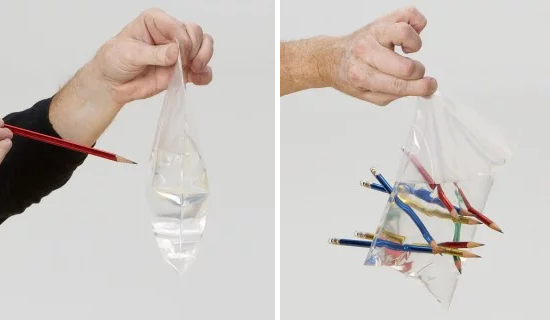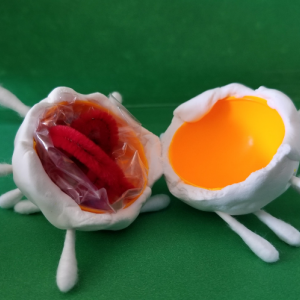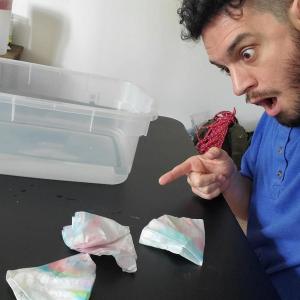
Pencil Pincushion
Image

Why do we use polythene for packing materials?
What do I need?
- 1 Plastic resealable lock sandwich bag
- Water
- Sharpened Pencils
What do I do?
- Sharpen your pencils. Make sure the ends have a nice point on them.
- Fill the bag half way (½) full with water and 1then seal it.
- Make a hypothesis “what do you think will happen if we try to push a pencil through the bag?”
- Get ready to test it out! We recommend trying this experiment over a sink or another container at first, so it doesn’t become a cleanup project instead.
- Hold the pencil in one hand and the top of the bag in the other. You can now push the pencil through the other side of the bag without spilling a drop! Once you’ve mastered this part, have some fun and try doing this over a friend’s end. Outside for extra precautions.
- See how many pencils you’re able to push through the bag without spilling any water. See who can get the most pencils in their bag!
- Once you’re finished with the experiment, hold the bag over the sink or a bucket and remove the pencils. Toss the bag in the recycling bin and let your pencils dry out.
What's going on?
The zipper lock bag you used was likely made of a material low density polythene (LDPE). This polymer is one of the most widely used packing materials in the world. And for good reason! LDPE is lightweight, durable, a barrier to moisture, low in cost and very flexible.
We can imagine these polythene molecules as strands of freshly cooked spaghetti. The tip of the pencil can easily push the strands of spaghetti apart, but the flexibility of the strands helps to form a temporary seal around the edge of the pencil. When we remove the pencil, the holes remain in the bag because polythene molecules were pushed aside permanently and the water leaks out.
Ages
Grade 6
Grade 7
Grade 8
Grade 9
Grade 10
Grade 11
Grade 12
Type
Activities
Demonstrations
Subject
Science
More Activities & Resources:
While water can dissolve the black inks, we need paper to more clearly separate the different colored inks
Activities, Demonstrations




